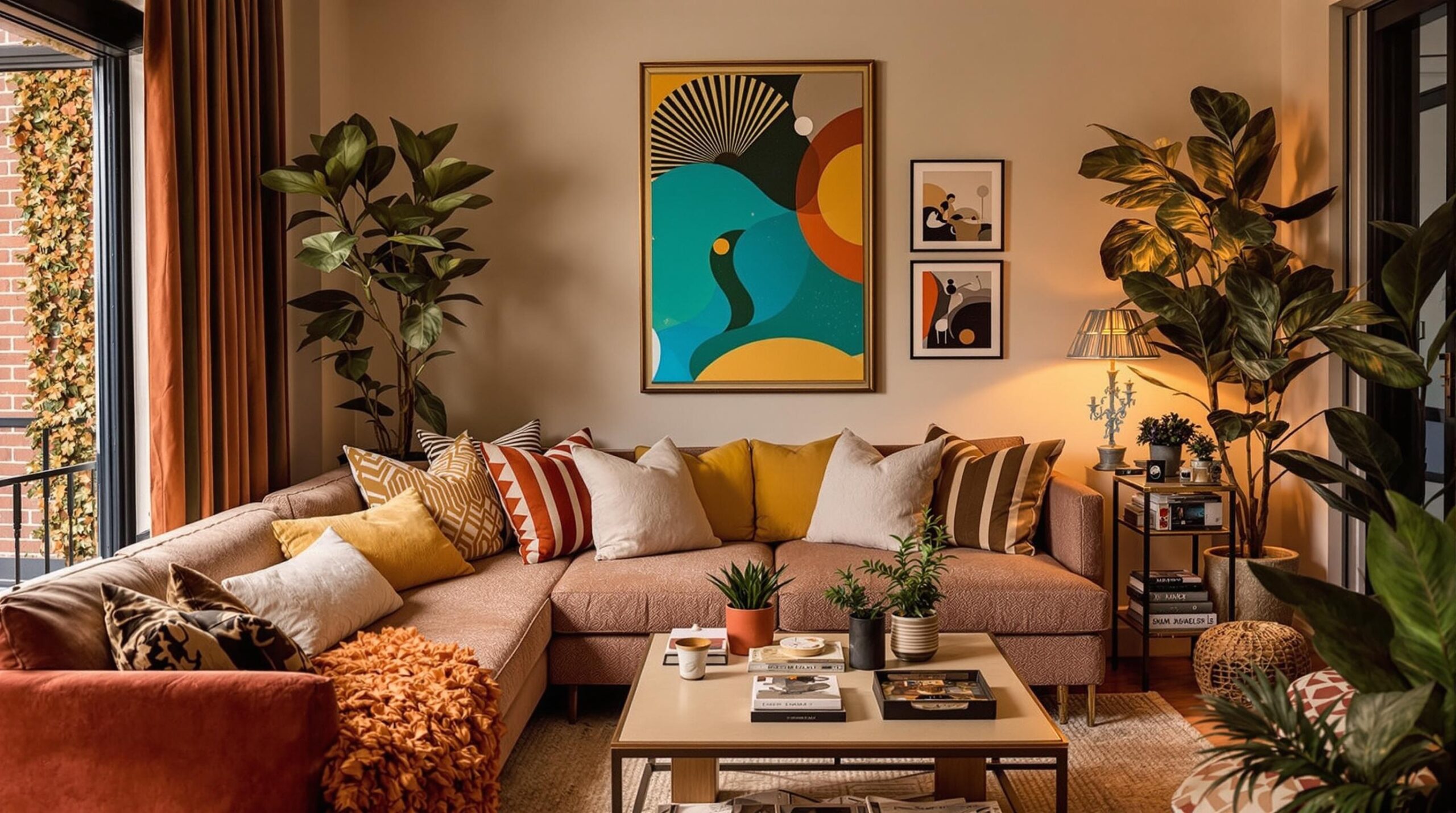Creating a cozy living space is an art that relies on balance, style, and personal expression. Maximalism emerged as an antidote to the sterile minimalism that has dominated design in past decades. This design philosophy embraces boldness, color, and a curated abundance of cherished items. A maximalist decor transforms homes into vibrant, comforting sanctuaries full of personality and warmth.
Understanding Maximalism: More is More
Maximalism invites exploration by blending diverse aesthetics, colors, and textures. Unlike minimalist design, where less is more, maximalist decor encourages the accumulation of objects and layers. This does not mean cluttering spaces indiscriminately. Instead, it involves thoughtful curation of items that resonate emotionally or aesthetically.
Visiting a maximalist home often feels like entering a personal museum. Every piece has a story, whether it’s an art piece from a favorite artist, a vintage rug from a flea market, or heirlooms passed down through generations. These items do not overwhelm but contribute to a narrative ambiance, inviting guests to explore and engage with various elements.
Layered Textures and Patterns
Layering textures and patterns is a hallmark of maximalist design. Plush fabrics bring depth and warmth, turning a room into a haven. Combining velvet, silk, and wool blankets draped over a sofa creates a tactile experience. This collection of textures enhances comfort and adds visual interest to the living space.
Mixing patterns might seem intimidating, but it enhances the inviting nature of maximalist decor. Bold, patterned wallpaper can be a striking backdrop against which framed artwork and textiles stand out. The key to successful pattern mixing is maintaining a cohesive color palette that ties the diverse elements together. Continuity ensures that varied patterns create harmony rather than chaos.
Embracing Bold Colors and Statements
Maximalist decor thrives on colors that pop and make an impact. Jewel tones, pastels, and rich earth tones create a vibrant atmosphere. Colors evoke emotions, and in maximalist design, they reflect the personality and spirit of the inhabitant. A vivid turquoise wall can lift spirits, while a deep burgundy couch invites relaxation.
Artwork and statement pieces enhance this color interplay. An oversized, vivid art print or a brightly colored sculpture anchors the room as a focal point. These statement pieces draw the eye, encouraging interaction and conversation. With careful placement, they add depth and layers to the overall design while reflecting the owner’s personality.
Personalized Collections on Display
One of the joys of maximalism is showcasing collections that reflect interests and experiences. Displaying objects like books, antiques, or memorabilia turns a home into a personal gallery. These collections do more than fill space; they tell stories and evoke memories of travels and experiences. A living room lined with books from floor to ceiling is considered a wealth of knowledge and stories, turning it into a cozy nook for lounging.
Collections should have a purpose through thematic organization or placement to avoid visual clutter. For instance, a wall of family photographs can be grouped chronologically or by theme, allowing for an engaging storytelling journey. Similarly, a cluster of vases might differ in size and color but share a unifying material or motif.
Thoughtful Use of Lighting
Lighting plays a transformative role in maximizing the cozy vibe in maximalist spaces. Layered lighting, including pendant lights, floor lamps, and candles, adds a warm ambiance and different moods. Warm, soft light creates an intimate atmosphere, making spaces feel inviting and comfortable.
Placement and fixture choices reinforce the overall design theme. An ornate chandelier might complement a traditional aesthetic, while quirky, modern lamps introduce an eclectic touch. Switching up lighting fixtures also offers an opportunity to integrate metallic elements, such as brass or copper, further enriching a room’s textural experience.
Greenery and Natural Touches
Integrating natural elements into maximalist design softens the look, establishing a connection with nature that enhances warmth. Indoor plants and flowers add life and breath to any decor style, providing dynamic shapes and soothing visuals. Lush greenery contrasts sharply with intricate patterns and bold colors, highlighting their vividness while adding tranquility.
Unique planters and pots complement the maximalist ethos, serving as decorative items on their right. Consider placing a whimsical ceramic planter on a windowsill teeming with trailing vines. This adds dimension and introduces fresh, natural air to your living space, promoting both style and wellness.
Achieving Balance in Abundance
While maximalism is known for its abundance, achieving balance is crucial for ensuring spaces remain inviting rather than overwhelming. Editing the space periodically helps maintain harmony, removing items that no longer serve a purpose. This allows for the introduction of new pieces that reinvigorate the space.
Strategic placement of items maintains equilibrium in busy environments. Balance bold prints with calm solids, dispersing intense focal points across larger rooms. Each room should contain resting points for the eye — areas of relative minimalism that provide respite amid visual richness.
Conclusion
Maximalist decor principles provide a gateway to ultra-cozy living spaces brimming with character and warmth. They invite personal expression, creating environments as dynamic as they are comforting. Through bold colors, layered patterns, and curated collections, homeowners craft spaces that reflect their stories and passions.
Lighting and natural elements complement these layers, establishing environments that engage the senses holistically. By understanding and embracing maximalism’s core principles, anyone can turn their home into a haven — not by filling it, but by enriching it with meaningful abundance. Transitioning from minimalist ideals towards a maximalist philosophy might appear daunting initially, but the result is a home that truly feels alive.


